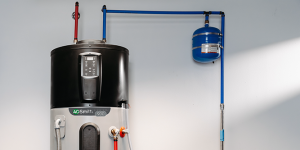Whether you’re completely remodeling your home or doing some minor upgrades, the job is going to cost money. Many homeowners borrow sufficient money for renovations to ensure they have the capital to finance the project without cutting corners.
Two options worth considering when funding your project are home improvement loans and home equity loans. Both products have pros and cons, with the main difference being the use of home equity. Keep reading for a thorough comparison of a home improvement loan versus a home equity loan so you can choose the option that works best for you.
What are home improvement loans?
A home improvement loan is any loan you use for home renovations or improvements. There are a few different options when seeking this funding, depending on how much you want to borrow.
First, you can borrow money through the Federal Housing Administration’s (FHA) Title I Property Improvement Loan Program. These loans come directly from banks and other qualified lenders, but the FHA insures them. This insurance means lenders approve them relatively quickly if you’re a low-risk client, making them perhaps the best home improvement loans for smaller projects.
It’s possible to borrow up to $25,000 for the alteration, improvement or repair of your single-family home through this program. The maximum repayment term for your loan will be 20 years and 32 days. You should be aware, though, that loans over $7,500 may need to be secured by the home’s mortgage or deed of trust.
The other option is an unsecured personal loan from a bank or other lender. You can use the money from this loan for any purpose, as it only becomes a home improvement loan if you use it for renovations to your property. You might have access to more than $25,000 with this type of loan, although it depends on your creditworthiness and a given lender’s loan limits.
How do home improvement loans work?
If you’re considering an FHA Title I loan, you’ll begin the process by calling the United States Department of Housing and Urban Development (HUD) and asking for a list of FHA-approved lenders in your state. You can then book an appointment with an approved lender to begin the application process.
Remember to choose a contractor with a reputation for good workmanship and honesty. You’ll also have to provide a completion certificate once the renovation is finished. All interest rates and repayment schedules are negotiated between you and the lender.
The process for an unsecured home improvement loan is a little more straightforward because you won’t have to find an FHA-approved lender. Instead, you can shop around with various lenders in your area or online to find the best rates. The lender will determine your interest rate and repayment schedule.
Home equity loans explained
A home equity loan differs from a home improvement loan because you’ll use any equity you build in your property through appreciation and monthly payments as collateral. Equity is the amount your home’s value exceeds what you owe on it. For example, if you buy a home for $400,000, pay off $200,000 of the principal, and an appraisal deems the property is now worth $600,000, you’ll have $400,000 in equity you can potentially borrow.
Lenders usually want you to have at least 20% equity before giving you a loan. The idea is that a lender will provide you with a lump sum amount you can use for any purpose, and you’ll end up with a second mortgage on the home as a result.
You can start by shopping around for the best home equity loans to meet your needs, as each option will have different interest rates. Various loan terms could be available, too, but you’ll be responsible for making monthly payments on the loan until you repay the principal and interest in full.
What is the difference between a home equity loan and a home improvement loan?
The main difference between a home equity loan and a home improvement loan is the use of equity, but there are some smaller details worth learning about. These details could influence your decision as you find the best way to fund your home renovation project.
How borrowing amounts are determined
In all scenarios, the lender determines the amount you can borrow. The criteria they’ll use varies based on the loan type you seek.
For an FHA Title I loan, the maximum a lender can grant you is $25,000, and that’s only if you own a single-family home or a manufactured home (any home built in an offsite manufacturing plant and then moved to its current location) that qualifies as real property. The rules for classifying a manufactured home as real property vary by state, but typically it means the home must have a permanent location, have its wheels and chassis removed, be attached to a foundation and be connected to local utilities.
Manufactured homes that don’t meet the state requirements for real property are classified as personal property. The most you can receive for a manufactured home qualifying as personal property is $7,500. You can also receive up to $12,000 per unit if you own residences in a multifamily building.
It’s worth noting that HUD doesn’t have any credit score or income requirements for these loans. However, individual lenders will have requirements you’ll have to meet to remain eligible.
If you take out a personal loan to pay for home improvement costs, the amount you can borrow depends on the lender, your credit rating and your income. Typically, lenders won’t let you borrow more than $100,000 unless you secure the debt with some sort of collateral.
Since a home equity loan uses your house as collateral, you can borrow a lot more, depending on how much home equity you’ve built up. In this scenario, some lenders will allow you to borrow up to 80% of the home’s appraised value, which could potentially leave you with significant funds to complete your renovation.
Length of repayment terms
Repayment terms can vary significantly, depending on the type of home improvement loan you receive. The lender will typically outline your repayment terms when you sign the agreement, but be sure to do your own research ahead of time.
With an FHA Title I loan, the maximum term is 20 years and 32 days for a single-family property or apartment, 15 years and 32 days for a manufactured home that qualifies as real property and 12 years and 32 days for a property improvement loan for a manufactured home classified as personal property.
Your lender will usually set the repayment schedule for a personal home improvement loan, depending on the amount you borrow. Conversely, a home equity loan typically comes with a repayment term of five, 10 or 15 years, and you’ll make monthly payments as you would with a mortgage.
Potential tax benefits
Home improvement loans don’t provide any direct tax benefits. However, you can deduct any interest you pay on a home equity loan for funds used to improve your house. You must secure the loan using your main residence or second qualified home to receive this deduction, and you’ll need an itemized tax return.
Secured or unsecured loan
A personal home improvement loan is an unsecured financial product, which could limit the amount lenders will offer. An FHA Title I loan is typically unsecured up to $7,500, but collateral in the form of your home’s mortgage or deed could be necessary for amounts between $7,501 and $25,000.
A home equity loan is secured by the equity you’ve built in your home. As a result, your home is the collateral, so you could lose it if you don’t repay the money according to the lender’s terms.
Covering closing costs
The closing costs you’ll encounter depend on the lender. Some lenders charge an origination fee of between 1% and 8% of the loan amount on personal loans, which covers administrative costs like verifying your documents and pulling your credit file. These charges apply to most home improvement loans and FHA Title I loans, but some lenders will waive them for applicants with a solid credit history. You’ll need to understand and account for these expenses before you get a home improvement loan.
You’ll also have to pay closing costs and other expenses on your home equity loan. These costs typically range between 2% and 5% of the loan amount and are similar to what you’d expect when signing mortgage documents.
Appraisal requirements
An appraisal is necessary for a home equity loan because the lender must know how much your home is worth to determine how much equity you have. You’ll have to pay for this appraisal, and the timeline can vary based on the availability of appraisers in your area.
Appraisals aren’t necessary for an unsecured home improvement loan because you won’t use your home as collateral. Your lender might require an appraisal for an FHA Title I loan over $7,500 because your home will secure the loan in that scenario.
Approval process
The approval process for a home improvement loan is relatively simple. For a personal home improvement loan, you’ll contact a lender, provide some personal and financial information and wait for a reply. Some lenders even offer same-day approvals.
FHA Title I loans are also quick. You’ll need to prove you own the home, fill out an application and sign a note agreeing to repay the money. You’ll usually receive your answer within a few days.
A home equity loan has a lengthier approval process because it’s similar to a mortgage. You’ll begin by filing an application, and the lender will have to verify your information, including the value of the home. The amount of time it takes to receive your money depends on how quickly the lender can verify your information.
Is a home equity loan a good idea?
Determining whether a home equity loan is a good idea for you depends on the loan’s purpose, the amount of equity you’ve built up in your home and the interest rates you can secure. These loans can be advantageous because they typically feature long repayment timelines and lower rates than unsecured loans. Home equity loan interest rates can be fixed, as well. Search for the lowest home equity loan rates available to you, or use a home equity calculator to ensure you’re getting a deal that works.
Despite their benefits, home equity loans aren’t risk-free. For instance, if you can’t afford to make your monthly loan payments, your lender could force you to sell the property to repay your debt. If your home depreciates over the loan’s term because of a market downturn or damage, the proceeds from the sale might not cover your debt, leaving you on the hook for the difference. It’s vital that you understand the risks before signing a home equity loan contract.
How to get home improvement loans
Getting a home improvement loan is as simple as reaching out to lenders for information on the rates they’re offering. Your credit score and income will influence how much you can borrow and the interest rate you can expect to receive.
For an FHA Title I loan, you’ll begin by calling HUD’s Customer Service Center at 800-767-7468 and asking for a list of approved lenders in your state. From there, you can make an appointment with a lender to inquire about the available rates.
What is needed for a home equity loan?
Before all else, you’ll need equity to get a home equity loan. You’ll build equity as you make monthly mortgage payments and as your home’s value appreciates over time.
There’s more to the process, though, as your lender will want to complete a credit check. Typically, lenders will require a credit score of at least 700 to approve your loan, but it’s sometimes possible to secure some money with a score in the mid-600s. Your debt-to-income ratio should also be less than 43% to qualify.
Summary of Money’s home improvement loan vs. home equity loan
When you don’t have much equity, or you’re completing some relatively minor home alterations, a home improvement loan will often be your best bet. However, you can secure more money and lower interest rates with a home equity loan, making it the top option for major projects on a home you’ve owned for a while.
The route you take will ultimately depend on your home renovation goals and current financial situation. Consider all your options to ensure you end up with enough money to complete the renovation and with the lowest interest rates possible.
Read the full article here














